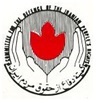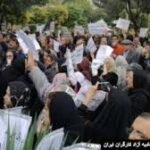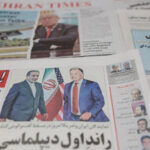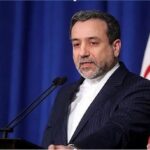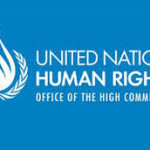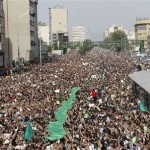
Biden’s attitude towards the Middle East is beginning to take shape as Iran builds towards a presidential election of its own. STEVE BISHOP senior Executive Council of CODIR considers the issues facing the leadership in both countries
IRAN’S national democratic revolution, which overthrew the dictatorship of the Shah in 1979, was a culmination of demands for democracy and progress that had been simmering in Iran since the MI6-inspired overthrow of the government of Mohammad Mossadegh in the 1953 coup.
That the revolution was subsequently hijacked by reactionary theocratic forces, resulting in the establishment of the Islamic Republic of Iran, is one of the modern-day tragedies of the politics of the Middle East.
The mission of the leaders of the Islamic Republic has, for much of the past 40 years, been reasonably clear. The Islamic Republic has been predicated on exporting Islamic revolution across the region based upon the Shia tendency within Islam, as opposed to the form of Sunni Islam supported by Saudi Arabia.
The staunch anti-Western and anti-Sunni positions of the Iranian theocracy have made them confirmed enemies of the United States and European Union powers; the Saudis and their allies in the Gulf states; and the Israeli state, the leading elements of which portray Iran as an existential threat.
Political Islam has been the bete noire of the United States and its allies since the advent of the Islamic Republic, a trend which was exacerbated by the events of 9/11 and fuelled the subsequent military interventions in Iraq, Afghanistan, Libya, Yemen and Syria. Yet in none of these interventions has the West been able to impose US-style democracy, usually the cover for intervention, or to install a regime friendly to the interests of Western imperialism.
Given these failures, the West has sought to shore up its regional position through the continued militarisation of Israel and Saudi Arabia, creating an arms bonanza for the Western military-industrial complex but doing nothing to address the needs of the people of the region.
Increasingly the economy of Iran has been based on the export of crude oil to generate much-needed dollars, while at the same time being reliant on imports for basic manufacturing and consumer goods.
The regime has combined theocratic control with a form of economic neoliberalism that has seen the economy dominated by huge concentrations of mercantile and finance capital, with strong ties to the top layers of the political power structure. National assets have been privatised and the collusion between the higher echelons of the political class and the industrial sector has resulted in corruption and economic weakness.
This weakness of the Islamic Republic’s economy has meant that it has been an easy target for the range of sanctions imposed by the US aimed at curbing Iran’s regional influence, constraining the nuclear programme and maintaining US regional hegemony.
The mounting pressure on Iran was given some relief with the signing of the Joint Comprehensive Plan of Action (JCPOA) in 2015, which traded a reduction in sanctions for a commitment from Iran to reduce its uranium enrichment programme. Before the easing of sanctions could have any impact however, the US Trump administration had reneged on the agreement, unilaterally withdrawing in May 2018, thus plunging the Islamic Republic into even deeper economic and political crisis.
The political crisis in the ruling circles in Iran has been underlined by the growth in active opposition on the streets, as protesters call out the corrupt practices of the regime, question the policy of draining national assets for the benefit of the ruling elite and challenge the increasing levels of unemployment and poverty faced by the people of Iran.
While the anti-Western and anti-US rhetoric of the Iranian leadership has led some on the left to conclude, incorrectly, that Iran is anti-imperialist in character, the policy and practices of the regime towards its own people, the suppressing of political dissent and the covert engagement of the regime in supporting US action in Afghanistan and Iraq, put its reactionary nature beyond doubt.
The regime in Iran is desperate to save its own skin and to that end is eager to seek a rapprochement with the West, made easier with the departure of Donald Trump from the White House. Iran’s regional political and extraterritorial paramilitary activities, in the form of the Quds Force and its proxy reactionary Islamist allies, have already been scaled back. Moreover, this retreat by Iran is used as a diplomatic bargaining tool in the negotiations with the US and its regional allies, including the current talks in Vienna for the revival of the JCPOA.
Tensions remain within the ruling circles in Iran as to how much the Islamic Republic should concede to the West and to what extent a harder line should be taken. The forthcoming presidential elections in June will be a focal point for this power struggle, as is the battle to succeed the ageing and increasingly frail Supreme Leader Ayatollah Ali Khamenei.
In the meantime, the Biden administration in the US is seeking to reset its relationship with Iran to the level achieved in 2015 with the so-called Obama doctrine for the multilateral containment of a balance of power in the Middle East. Sections of the Iranian regime are desperate for this to happen, not least to open up access to international finance capital, which is currently denied.
The US and its European allies for their part see some concessions with Iran as potentially opening the path for a more Western-friendly government and the potential to exploit Iran’s vast and largely untapped market.
While Israel and Saudi Arabia have been more belligerent in calling for military action to curb Iran’s influence, this approach is less likely to gain traction with Joe Biden than it was with Donald Trump. There is no doubt that the endgame for Biden remains one of maintaining US influence, if not complete hegemony in the Middle East, but the methods employed will be less strident than Trump and the initial approach at least, more subtle.
Already the leveraging of the Saudis has begun, with a meeting between officials from the Supreme National Security Council of Iran and the Saudi head of Intelligence Services taking place in the presence of US CIA director William Burns, as reported recently in the Financial Times.
Behind closed doors, the regime in Iran will tolerate a change in relations with the United States if that means sanctions relief and the possibility of international trade. By the same token, the United States will not press Iran on its human rights record if it can revive the nuclear deal and begin to get financial leverage into the Iranian economy.
Pragmatism is, at present, likely to be the watchword on both sides of this divide. The benefits to the people of Iran and the Middle East more widely remain more questionable. The threat of military intervention may recede, but the spectre of poverty, unemployment and exploitation will remain. A short-term deal will not fix that. The fate of the peoples of the Middle East will only be satisfactorily resolved when they are able to take it into their own hands.

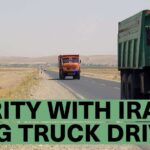




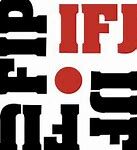
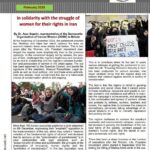


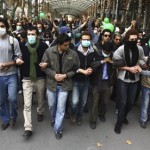
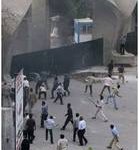
 Posted in
Posted in 